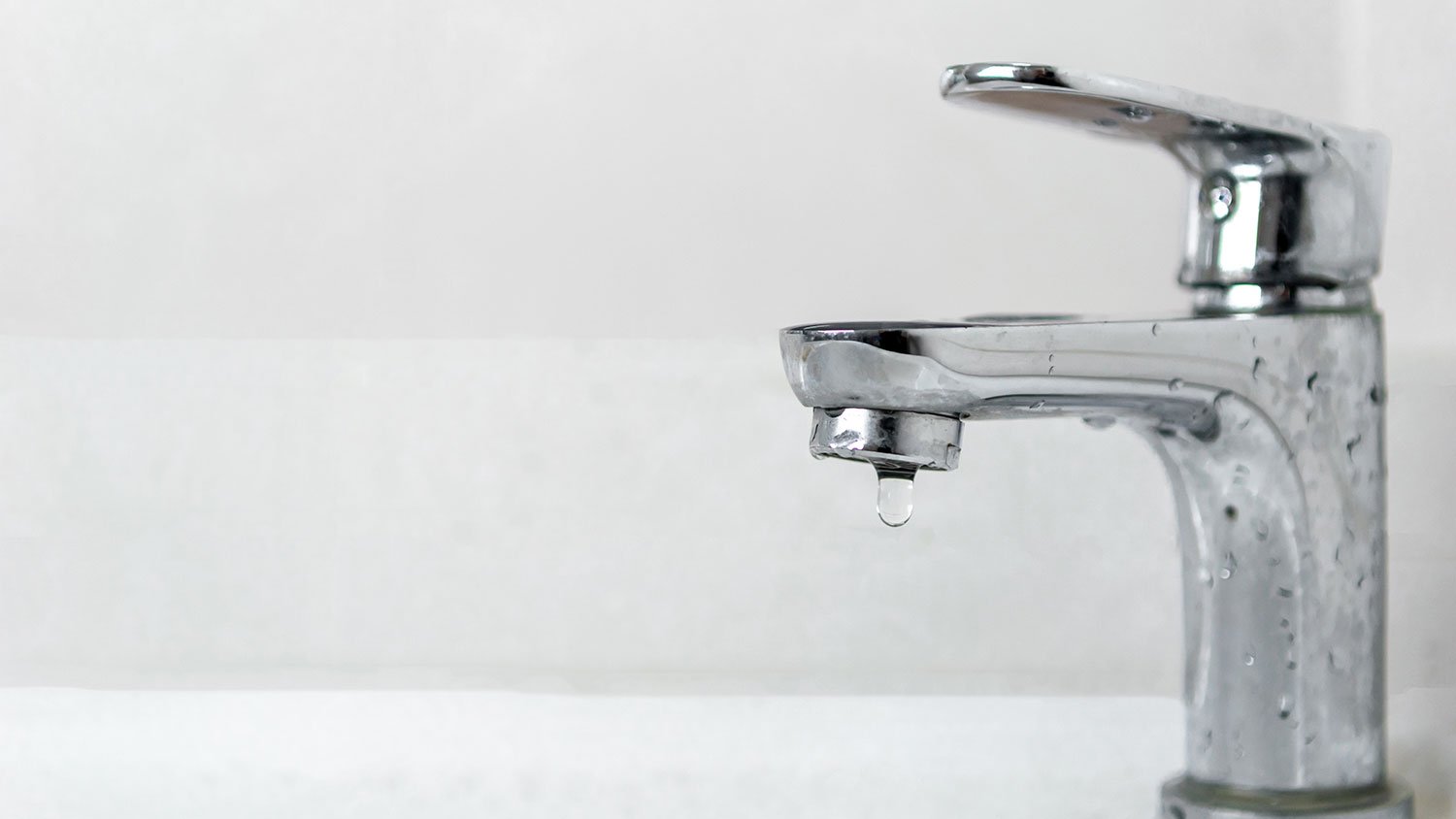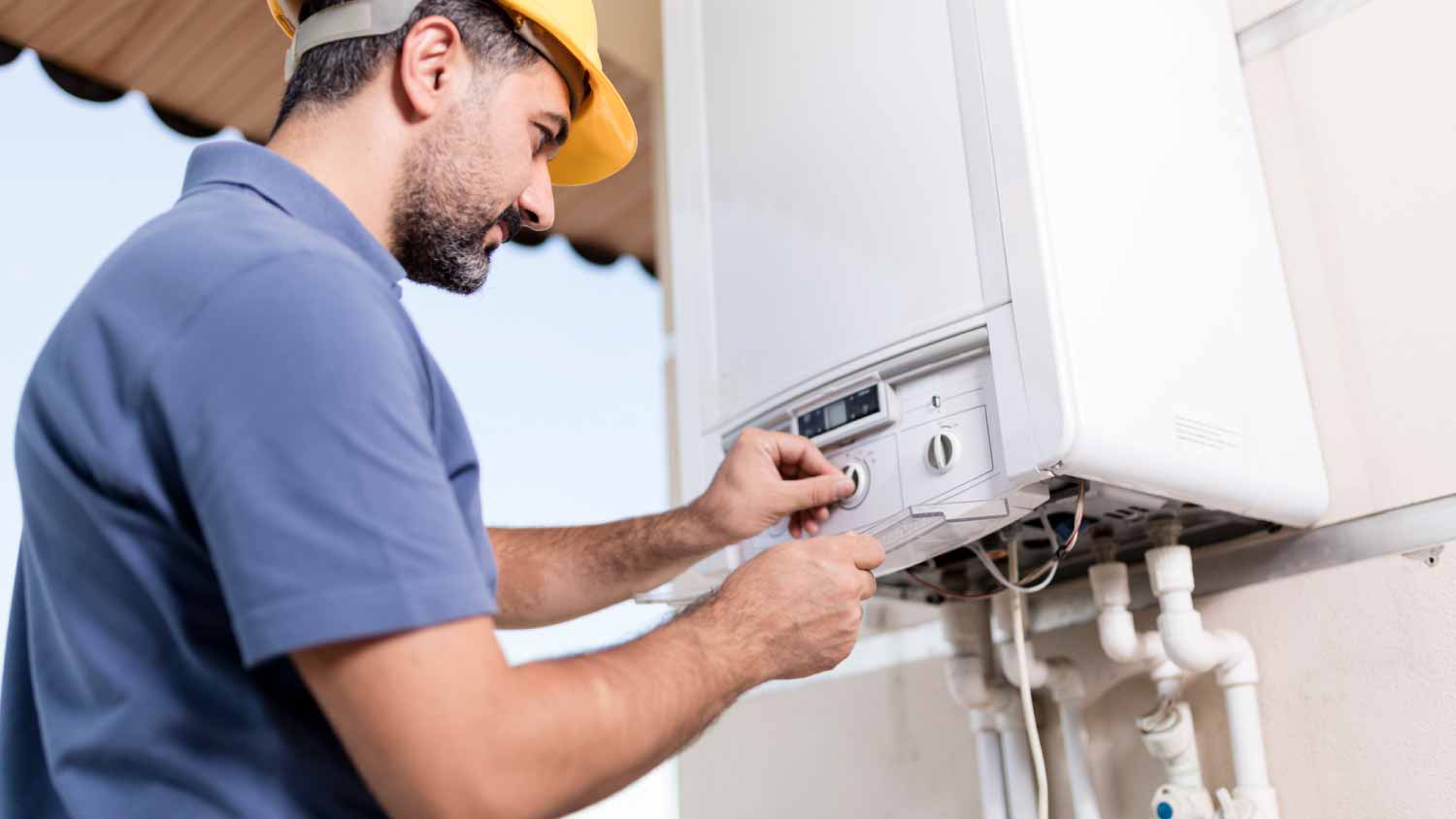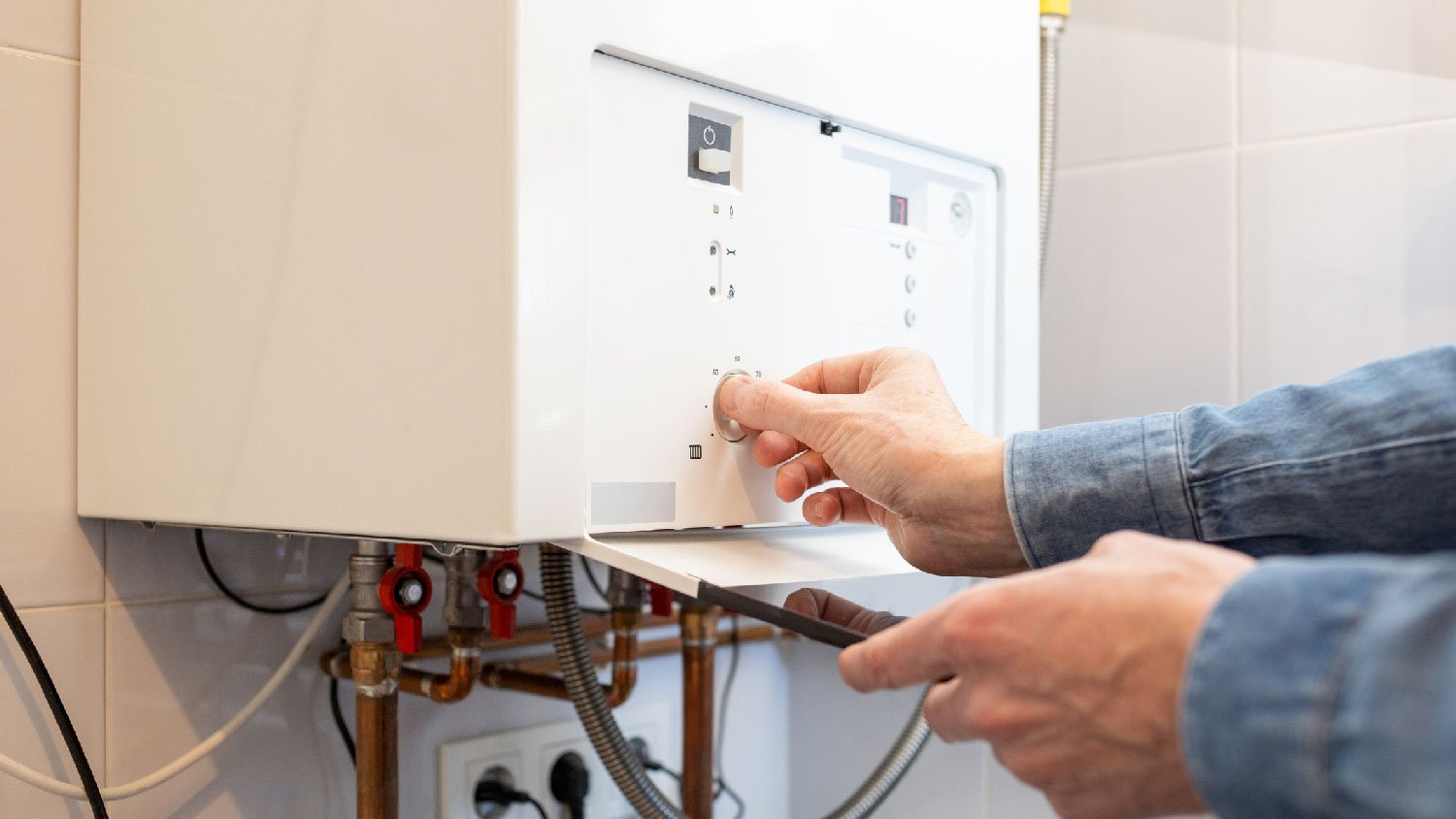Tankless Water Heater Not Heating: 8 Causes and Solutions
Crank up the heat with a little troubleshooting


The average tankless water heater costs $2,500.
It costs around $600 to have a pro repair your water heater.
Rule out simple fixes first before tackling complex ones.
It might be time to replace—rather than repair—an older water heater.
You’re trying to fill the tub to relax after a long day when—zap!—the water goes completely cold. Not only does this make it tough to enjoy your much-deserved bubble bath, but it also means your tankless water heater’s not heating.
There are a few common causes for cold tankless water heaters, such as a disconnected power source, a dirty filter, or too many faucets competing for hot water. Luckily, you can handle many issues yourself in relatively short order. Learn the most common reasons tankless water heaters stop heating and what you can do about it.
1. Your Power Source Is Off

Much like searching for a pair of glasses that are on your head, you don’t want to go through the steps of troubleshooting a faulty tankless water heater when the solution is simple—so make sure the power supply is on!
How to Fix It:
If you use an electric tankless water heater, check the breaker box to ensure that the power source is in the “on” position and if the water heater is tripping the breaker. For a gas water heater, check your gas valve and your gas bill to be sure everything is up and running.
2. The Flow Rate Is Too Low
If your water initially runs hot only to turn cool—or if it runs hot, cold, and then hot again—there’s a chance your household’s demand for hot water is too high for your tankless hot water heater’s capacity. This is especially true if you notice the temperature change when your home uses multiple hot-water-using fixtures at a time. Having too many hot-water-using fixtures on for your tankless water heater can overload the system, leaving you with cold or lukewarm water.
How to Fix It:
If you only notice the temperature fluctuations when hot water is in high demand, you might solve this problem by decreasing the number of hot water fixtures you use during peak hot water times in your home. For homes that can’t cut usage during peak hours, you might need to upgrade to a water heater with a higher capacity or purchase a backup water heater.
3. You Have Sediment Buildup in Your Pipes
Just like with your sink, dishwasher, or washing machine, if you have hard water, mineral deposits can ruin the performance of your tankless water heater or the pipes that send the hot water throughout your home.
How to Fix It:
Calcium and magnesium are the biggest culprits behind mineral buildup, and they can also decrease the lifespan of your appliances by forcing them to work harder. Fortunately, they’re relatively easy to remove. Flush your water heater to stay on top of sediment buildup, and descale your water heater yearly to help prevent your appliances from dying before their average lifespan.
4. Your Gas Tankless Water Heater Fails to Ignite
For gas water heaters, an issue with the flame could be to blame. Your water heater might display an error code to indicate a flame failure. A failure to ignite can prevent your appliance from ever heating your water in the first place, leaving you with cold water.
How to Fix It:
The first thing you’ll want to do is check that you haven’t run out of propane. If you still have propane, there may be a partially closed gas or water valve. If neither of these DIYable solutions works, you’ll want to hire a water heater company to try to resolve the problem.
5. Cold Weather Froze Your Pipes

If you use a tankless water heater in cold climates and it’s freezing outside, it may be freezing inside, too—inside your pipes, that is! It’s a good idea to take measures to prevent your pipes from freezing before a problem arises, but if you already have frozen pipes interfering with your water heater, there are some steps you can take to fix them.
How to Fix It:
If you’re wondering what to do if your pipes are frozen, start by opening the cabinets under your sink to promote airflow, keep the faucet on and dripping when the weather dips below freezing, and use a hair dryer on low heat or even a portable space heater to thaw frozen pipes.
6. There’s a Block in the Air Supply, Vent Pipe, or Exhaust
If your water heater can’t properly ventilate or experiences combustion problems, an air blockage may be at fault. Many tankless water heaters have built-in safety precautions in case of a fire hazard caused by blockages in the air supply. Be on the lookout for a suspicious error code on your tankless water heater’s monitor or display when the water fails to heat, and take a quick look at the manual to see if the airflow is to blame.
How to Fix It:
If there is an error code or you suspect a blockage of sorts, inspect the exhaust lines, intake lines, and ventilation system. Be it a bird’s nest or debris—a blockage in the ventilation system is a potential fire hazard you should clear up right away.
7. Water Temperature Fluctuation
If you notice the temperature is hot, cold, and then hot again, this is because there is some leftover warm water in the faucet from the last time you used it. If this is the case, no need to worry. But, if you have more dramatic fluctuations from just hot to cold, it could be a dirty filter or a broken temperature sensor.
How to Fix It:
To clean the filter, first turn off the power to the unit and the water supply. Remove the filter and rinse it under water to remove dirt buildup. Once it’s clean, place it back in, turn on the power and water supply, and test the water.
If that doesn’t work, it’s best to call in a pro to check the temperature sensor and replace the component, which is a more complicated process.
8. Your Tank Is Near the End of Its Lifespan
If your tank has seen better years—and you’ve troubleshot every possible solution—then it may be a sign that it’s time to replace your water heater. Gas-burning tankless water heaters have a 20-year lifespan. Electric tankless water heater problems can occur sooner, as they only last up to 10 years, meaning your water heater will need replacing more frequently.
How to Fix It:
If your budget doesn’t allow for an immediate replacement, call in a pro to see what they can do to keep your water heater humming until you can afford a new one—you may be able to buy yourself a few extra months by replacing a worn-out part. Once you have a new tankless water heater in place, consider whether a water softener may help extend its lifespan.
When to Call a Pro
When you’ve tried everything to troubleshoot your tankless water heater only to have no hot water still, you might be wondering when it’s time to call in the pros. Again, you may be better off replacing an older tankless water heater that’s seen better days. A tankless water heater costs $2,500 on average.
If you’d like a pro to diagnose a tankless hot water heater that’s not working, consider contacting a tankless water heater pro near you to see what’s causing the problem. Tankless water heater repairs cost between $220 and $960, or an average of $590.
Frequently Asked Questions
Resetting a water heater, including a tankless one, can be quick and easy. First, check your electrical panel to see if the breaker tripped. If so, flip it back on and see if hot water returns. If not, turn off the heater's power. Inspect it for damage, and if you see none, hit the reset button to restore power. Consider hiring a pro if these steps prove unsuccessful.
Tankless water heaters last up to 20 years—nearly double the lifespan of conventional water heaters—but cost nearly twice as much upfront. You can maximize their longevity by ensuring proper installation and regular maintenance. Your household usage will also affect how long they last.





- How To Install a Tankless Water Heater
- What to Do if Your Tankless Water Heater Freezes
- Can You Use a Tankless Water Heater in Cold Climates?
- Key Pros and Cons of a Tankless Water Heater
- How Long Does a Tankless Hot Water Heater Last?
- How Long Does a Water Heater Last? Should You Replace It?
- Who Fixes Tankless Water Heaters? Everything You Need to Know
- Is a Water Softener for a Tankless Water Heater Necessary?
- The 5 Biggest Myths About Tankless Water Heaters
- Is a Tankless Water Heater Worth It?















